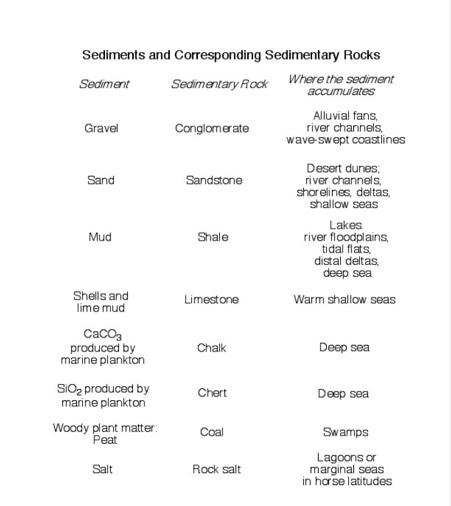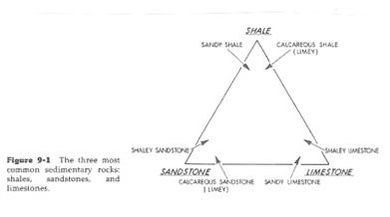Sedimentary Rocks
Classification based on origin
Clastic sedimentary rocks are composed of other pre-existed rock fragments E.g. quartz feldspar, clay minerals, and mica
Clastic rocks: sandstones, conglomerates, mudrocks
Biochemical sedimentary rocks are created from organism in nature e.g. skeletal or shell material or leaves
Biochemical rocks: limestone, coals, chalks
Chemical sedimentary rocks are formed by chemical precipitation of minerals
Chemical rocks: oolitic limestone, halite(rock salt), sylvite, barite and gypsum
Clastic sedimentary rocks are composed of other pre-existed rock fragments E.g. quartz feldspar, clay minerals, and mica
Clastic rocks: sandstones, conglomerates, mudrocks
Biochemical sedimentary rocks are created from organism in nature e.g. skeletal or shell material or leaves
Biochemical rocks: limestone, coals, chalks
Chemical sedimentary rocks are formed by chemical precipitation of minerals
Chemical rocks: oolitic limestone, halite(rock salt), sylvite, barite and gypsum


